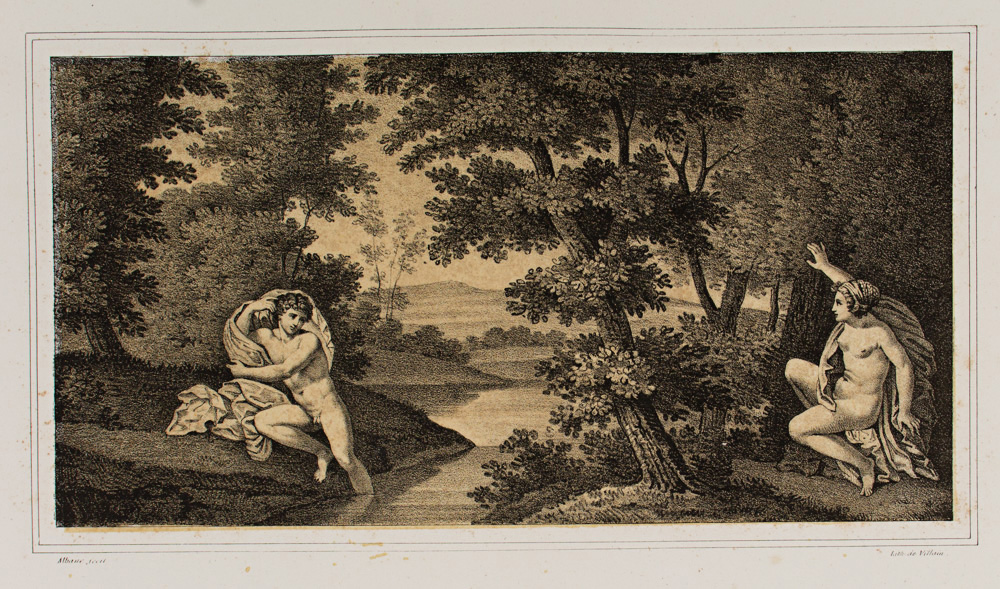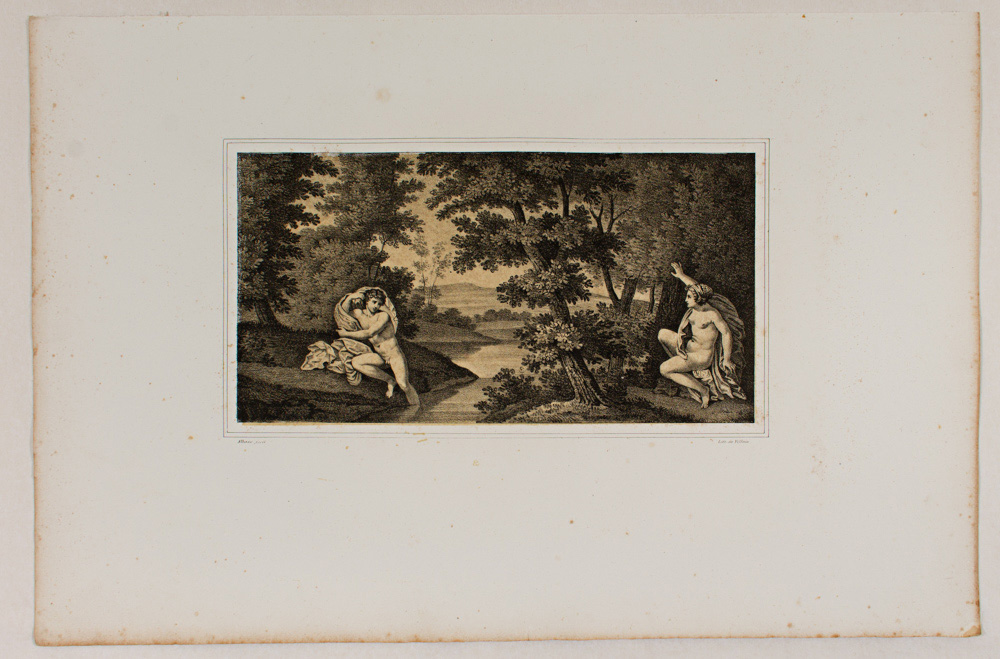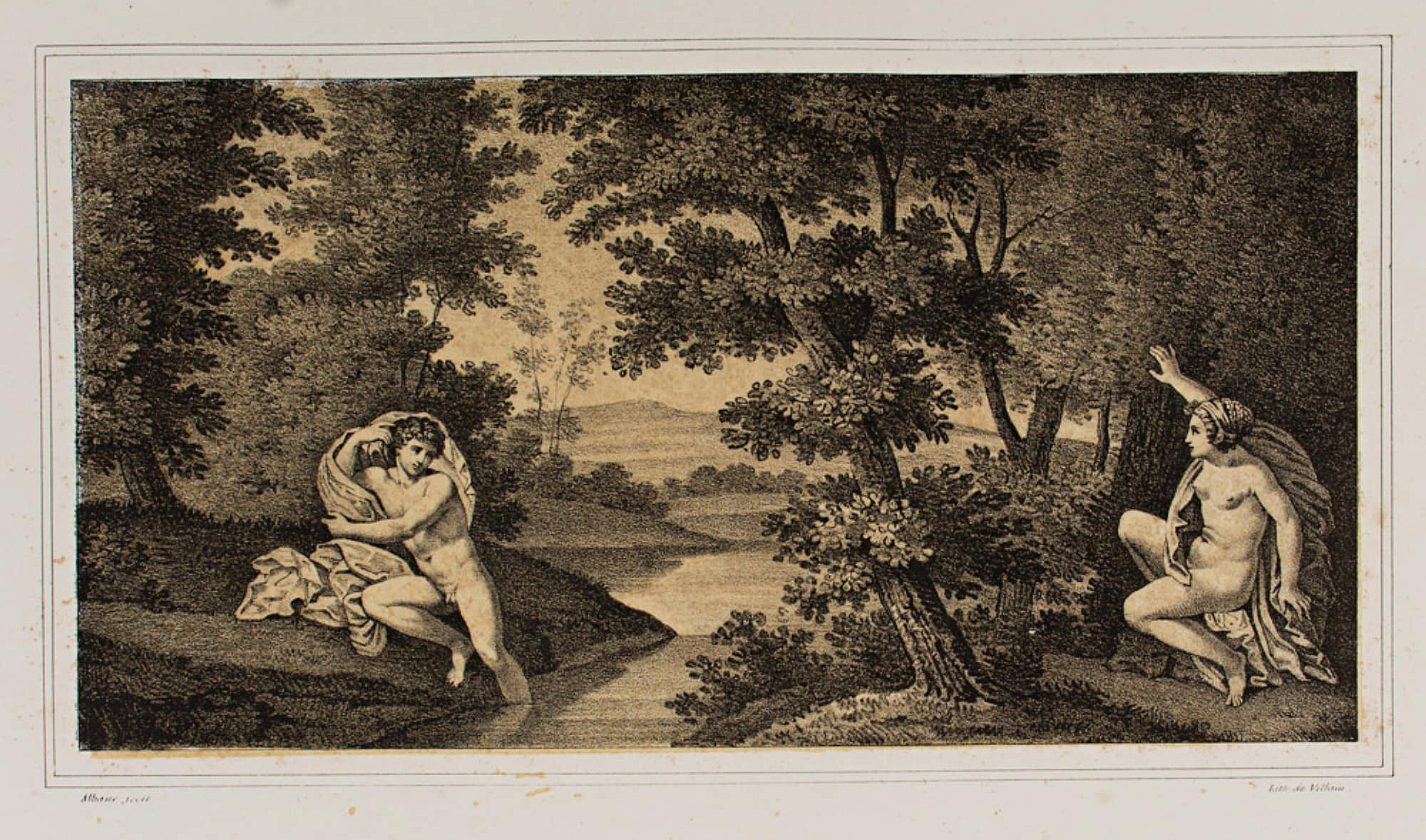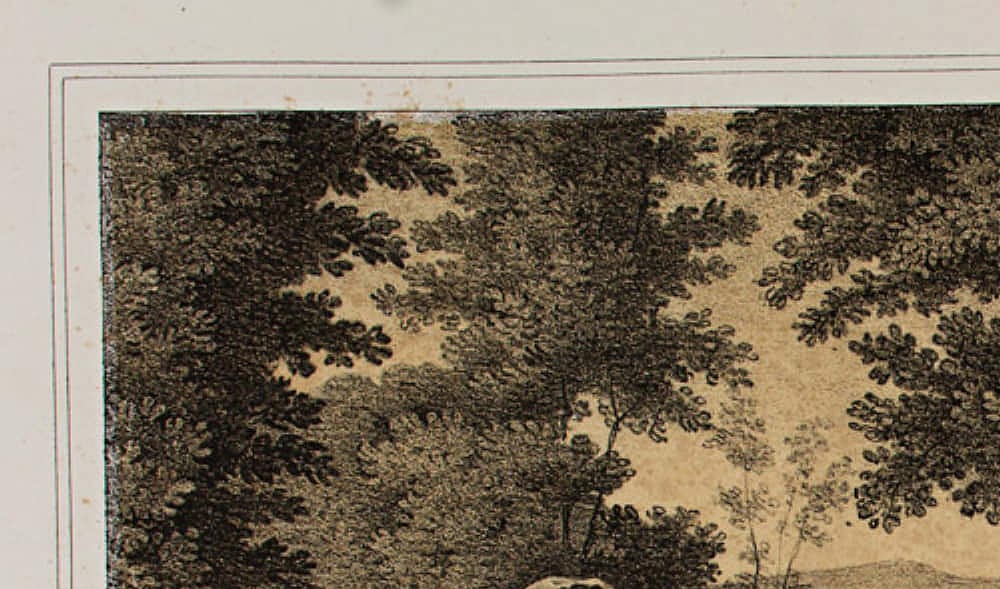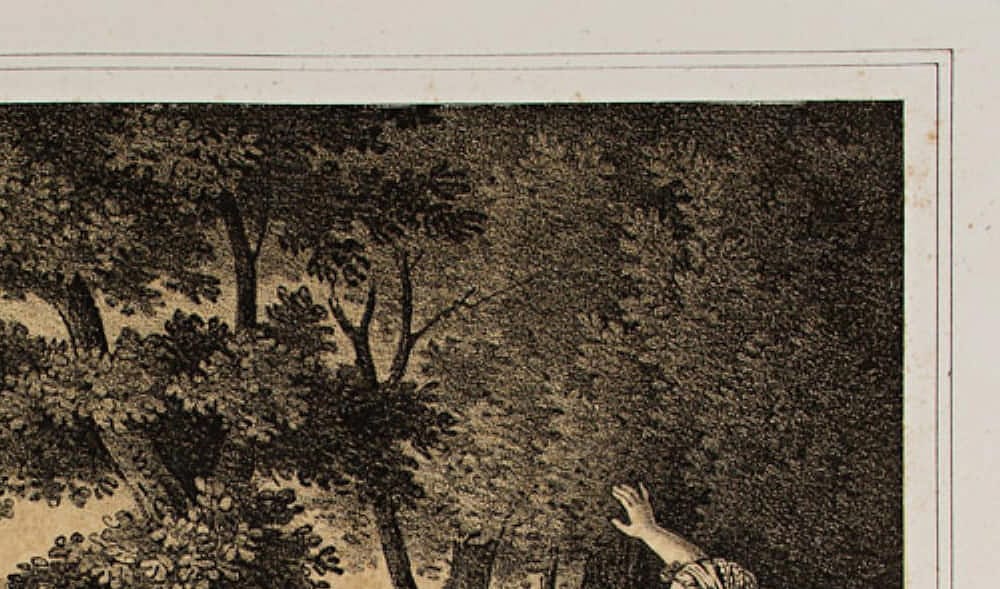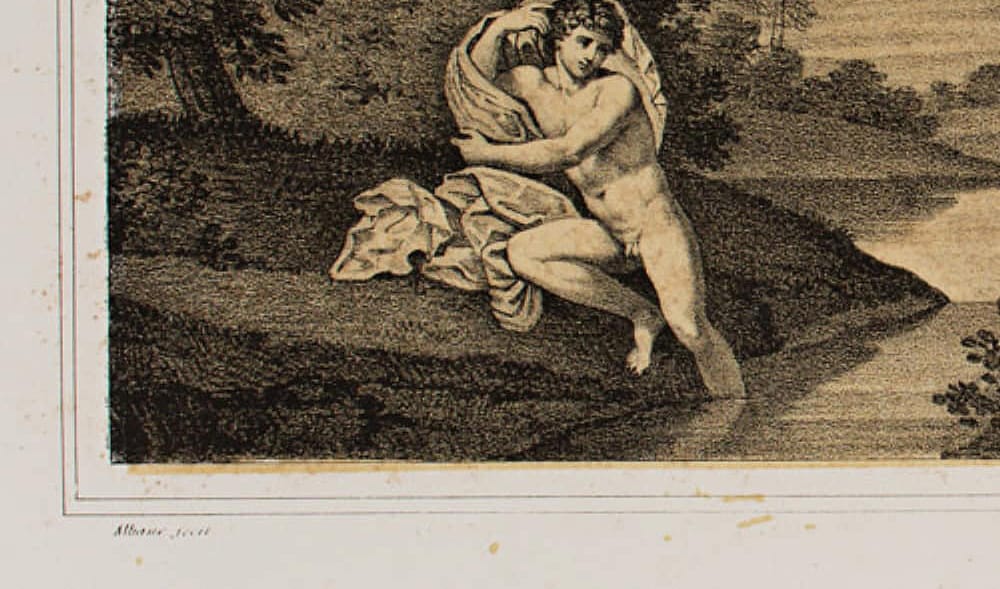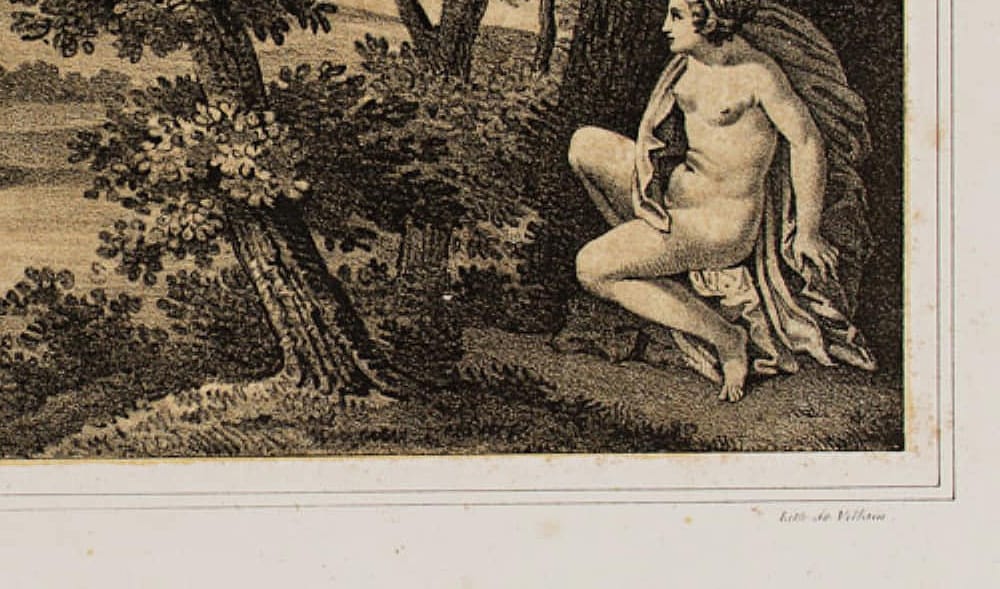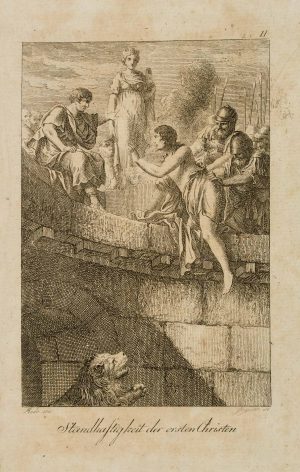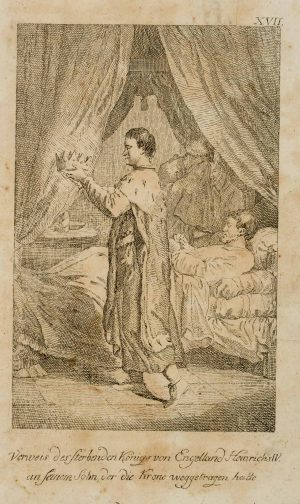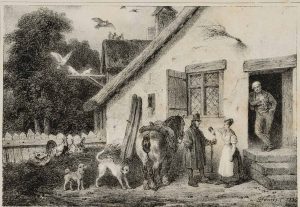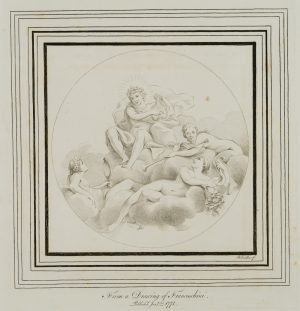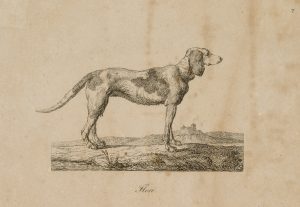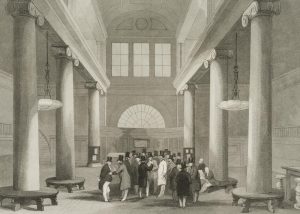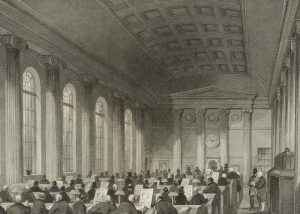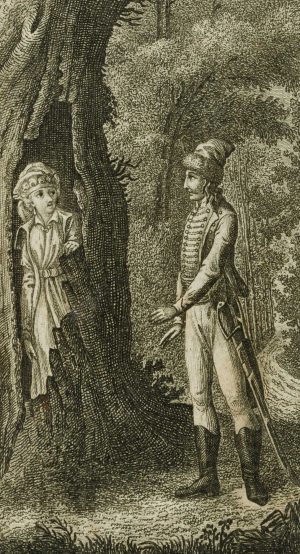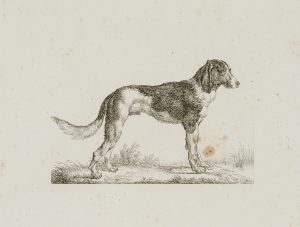François le Villain (19. Jahrhundert) nach Albane: Francesco Albani (1578 – 1660 ), Aphrodite mit Nymphe, um 1830, Lithographie
- Technik: Lithographie auf Papier
- Datierung: um 1830
- Beschreibung: Aphrodite mit der Quellnympfe Salmacis. Farblithographie nach einem Werk von Francesco Albani, genannt Albane (1578-1660). Er war Maler der Romanischen Schule. Lithographie von Villain. Aus der Serie: Bilder der Italienischen Schule (ECOLES D’ITALIE). Bezeichnet: Albane fecit. Lith de Villain.
- Schlagworte: Mythologie, Italien, Barock, 1800-1849
- Größe: 32,3 cm x 48,9 cm, Darstellung: 15,4 cm x 28,2 cm
- Zustand: Guter Zustand. Das Blatt weist nur geringfügig Altersflecken auf. Der untere Rand ist ausgefranst und zeigt einen kleinen Riss.
English Version:
François le Villain (19th century) after Albane: Francesco Albani (1578 – 1660 ), Aphrodite with nymph, c. 1830, Lithography
- Technique: Lithography on Paper
- Date: c. 1830
- Description: Aphrodite with the spring nymph Salmacis. Colour lithograph after a work by Francesco Albani, called Albane (1578-1660). He was a painter of the Romanesque School. Lithograph by Villain. From the series: Pictures of the Italian School (ECOLES D’ITALIE). Inscribed: Albane fecit. Lith de Villain.
- Keywords: , 19th century, Baroque, Mythology, Italy,
- Size: 32,3 cm x 48,9 cm (12,7 x 19,3 in), Depiction: 15,4 cm x 28,2 cm (6,1 x 11,1 in)
- Condition: Good condition. The sheet shows only minor age spots. The lower margin is frayed and shows a small tear.

